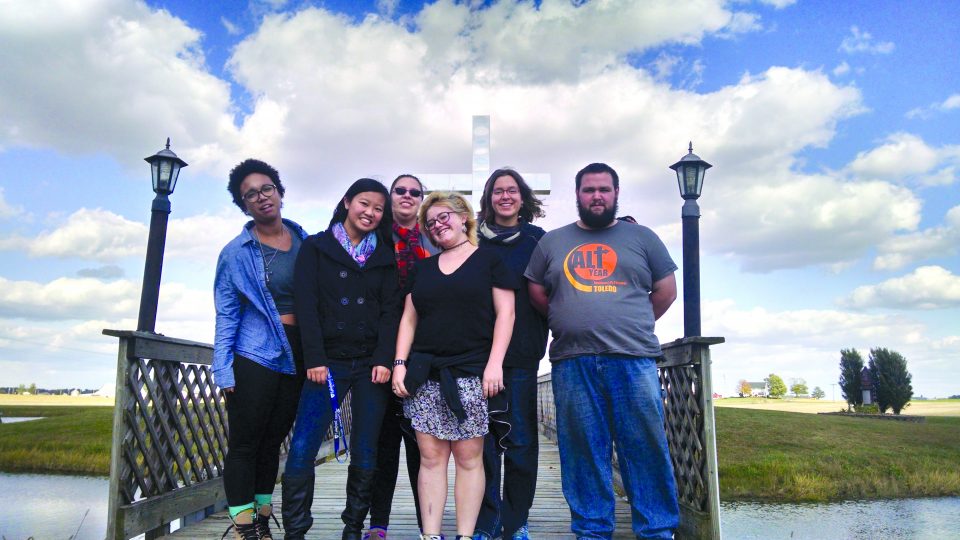For many young adults, the arrival of August signifies the start of the college journey, a time to pack bags, leave home (maybe) and study independently among thousands of other students. But for Malia Obama, 18, and an estimated 30,000 to 40,000 U.S. young adults, this August is a moment to press pause on the achievement-oriented rat race and take a gap year.
A gap year is the time between high school and college or college and life after college for young adults to focus on self-exploration. Popular in Great Britain, Australia and New Zealand—with growing interest in the U.S.—it often involves travel or volunteering. Obama is taking the year off before attending Harvard University, Cambridge, Mass., in August 2017.
There are a handful of Lutheran gap year programs, including Lutheran Volunteer Corps and ELCA Young Adults in Global Mission. But only one was modeled after a Scandinavian Folkehøgskole (folk school) created by Lutheran pastor Nikolai Grundtvig in the 1840s—ALT (Abundant Life Together) Year.
ALT Year is an ELCA-affiliated program founded by Josh Graber in 2011. A pastor and self-described entrepreneur in the church, Graber took time off amid his college journey at a folk school in Norway. After eventually returning to college and completing seminary, he now directs ALT Year.
“We all need times when we step off the track so we can reflect on our lives and relationships and what our calls are,” he said. “Whatever age you are, that’s important. For young adults in particular, gap years are important because they’ve lived such pressured lives as students.”
For ALT Year, those aged 18 to 25 are matched with ELCA congregations and other nonprofit organizations in Toledo, Ohio, for service learning. Study, worship and travel are also a large component. ALT Year cohorts have been held in 2013-14 and 2015-16. A third begins in September.
Connecting with each other
Amber Kalina felt burnt out after college with its endless tests and essays. Interested in pastoral ministry, she started researching options for a gap year because “there was no way I was going to pipeline from college to seminary.”
Kalina said she ultimately chose ALT Year because she “wanted to do something meaningful” and grow in her “faith in that journey as well.”
Elisabeth Coats graduated from college early and was looking for a break before pursuing graduate school. She learned of ALT Year from Graber, a close family friend, and applied.
In September 2015, Coats and Kalinas began their ALT Year in Toledo, Ohio, along with four other young adults. The group shared meals, devotions and space in a downtown apartment, gathered in what Graber describes as “intentional community.”
Each month the “ALT-ers” (as they are called) studied such themes as freedom, vocation, social justice and resurrection. Each week looked different, but most Sundays they would worship at local ELCA congregations; Mondays, Tuesdays and Thursdays were for Bible study followed by a folk-school learning session with local leaders or organizations; and Wednesdays were often dedicated to volunteering.
Coats volunteered at Glenwood Lutheran Church’s Giving Store in Toledo, Ohio. That’s where she shadowed a social worker and met Wendell, a client who shopped for clothes, which were free, each week. “He taught me to be in the moment,” she said. “Being able to engage with [Wendell] was really special.”
Kalina volunteered at Redeemer Lutheran Church in a program that offered homework help and art enrichment to youth. She brought her guitar and played music for them and helped with crafts. “I heard a lot in Toledo that the church was dying,” she said. “But I had never seen the church more alive than when I’d been there.”
For Coats, her gap year helped her learn to trust others and participate in intentional community. Reflecting on her experience, she said, “I think I just became someone who was able to ask for help a little bit more. ALT Year helped shape and form me to be more vulnerable.”
Both Coats and Kalina agree that their ALT year has had a great impact on the way they understand their callings. Coats is pursuing her masters of social work at Washington University, St. Louis, this fall and Kalina will work with ALT Year before attending seminary in fall 2017.
For Ian Kruk, who participated in ALT Year after finishing high school, the experience had a tremendous impact on his personality. Before his gap year, Kruk was introverted and closed off. “Living with seven people isn’t easy when you’re introverted,” he said. “I became more upbeat, more outgoing and less closed off.”
Graber added, “[Ian’s] family would see pictures of him and say, ‘He’s smiling, he’s smiling all the time,’ There was a visible transformation while he was in ALT Year.”
Part of the year that resonated with Kruk was “being able to actively live my faith.” He now works at a vape shop near his hometown and is an active member of Good Shepherd Lutheran Church in Florham Park, N.J. He says he sees his work at the shop as a way to connect with people and make their lives “a little bit better, even for 10 to 15 minutes each day.”
Gap years have been critiqued as options only for elite, privileged young adults. Knowing this, Graber said he has worked hard to make ALT Year affordable, but he said he’s looking for more support from across the church. The cost is $5,000 for the year, and participants are encouraged to raise money and apply for scholarships.
“It’s valuable to engage and to invest in young adults like this because they bring a lot back to us,” said Graber of ALT Year. “And probably the biggest overall story in this is just the recognition of this. They’re seeing their lives and their work as a form of ministry to the people they are engaging.”
Learn more about ALT Year at altyear.org.





